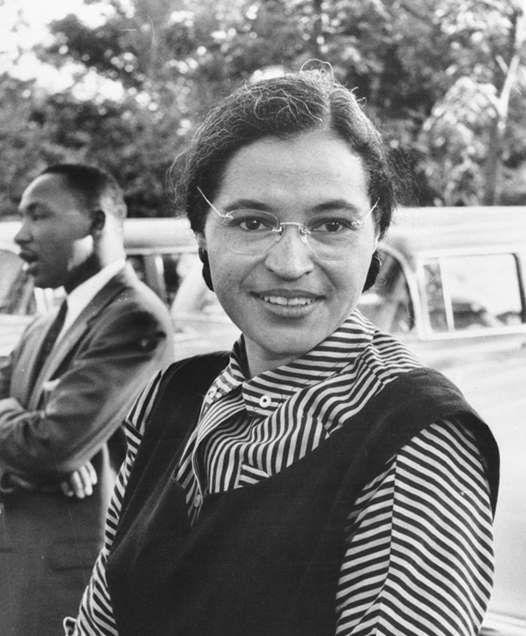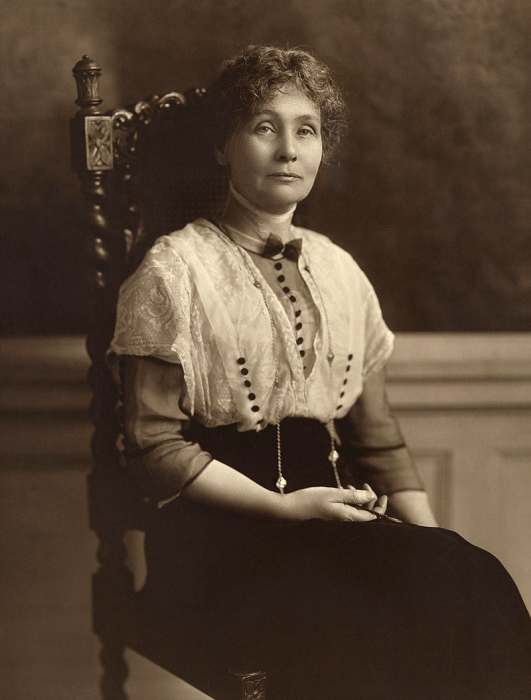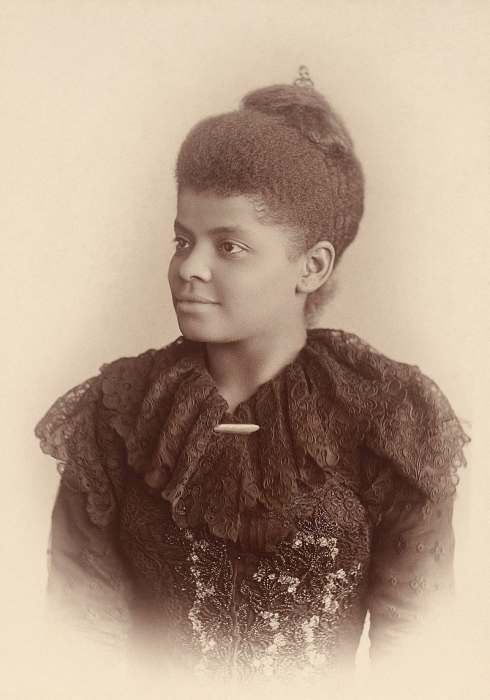Throughout history, from ancient civilizations to the modern era, women have played pivotal roles in shaping societies and advancing the cause of women’s rights and racial equality. Their influence has extended across diverse fields, encompassing science, mathematics, aviation, literature, and more. As we examine the continuum of history, it becomes evident that women have consistently broken barriers and left indelible marks on the world, contributing to the progress and empowerment of their gender across different epochs.
While we may be familiar with the likes of Mother Theresa of Calcutta and talk show host Oprah Winfrey, there are numerous other women of importance who may not be – or may not have been in their time – huge worldwide personalities but have certainly paved the way for the world in their respective fields.
Let us take a look at some of them and their contributions that might have been overlooked, however groundbreaking they may be.
Agnodice
Agnodice or Agnodike, a midwife and considered as the Greece’s first female doctor, is one of the earliest female gynecologists who fearlessly practiced medicine in ancient Greece, despite impending death sentence. When she was discovered, she faced charges but was ultimately cleared and permitted to carry on thanks to her patients’ support.
There is a debate among scholars, though, suggesting that she might not have been an actual person but a carefully crafted legend. But midwives have held onto her story for countless generations regardless.
It is said that Agnodice, in order to practice medicine, disguised herself as a man due to the gender restrictions of the time. To gain her female patients’ trust, she would partially undress to show she was indeed a woman. Her medical skills made her highly sought after in ancient Greece, which drew unwanted attention from the medical society. Male physicians accused her of seducing women. In court, she revealed her true gender to refute the allegations of lewdness but ended up on trial for violating laws against women studying and practicing medicine.
Sor Juana Ines de la Cruz
In 1691, the renowned Mexican writer and nun Sor Juana Inés de la Cruz faced backlash for her interest in secular texts. In response, she made a memorable statement, asserting that women “can perfectly well philosophize while cooking supper”. She’s now a national symbol and can be found on Mexican currency.

She saw her work published in various regions of the Spanish-speaking world while she was alive. She gained recognition as the foremost Baroque poet in New Spain (Mexico), which brought her both admiration and harsh misogynistic criticism. She faced persecution for being an intellectual, a woman, a nun, and a writer who boldly expressed herself in the deeply Christian society of 17th-century New Spain.
Anna Filosofova
A notable advocate for women’s rights and philanthropist in Russia, she was progressive in her thinking. She argued that it was more beneficial to empower the less fortunate through education and skills training rather than simply giving them money. In 1860, she played a key role in establishing a society aimed at assisting the impoverished, offering not just affordable housing but also meaningful employment opportunities for women. The ideals of this feminist, activist and charity organiser still holds much truth and value in solving the social welfare management problems of today.
Vandana Shiva
She is a passionate advocate for the environment, established Navdanya in India in the early 1990s. Her aim was to preserve distinct varieties of seed crops and provide farmers with education on ecological diversity. Within Navdanya, she initiated a program focused on biodiversity, food, and water, empowering women to safeguard the well-being of their communities’ livelihoods.

In addition to her roles as a physicist, ecologist, activist, editor, and prolific author, Vandana Shiva is an unwavering champion of environmental protection.
Shiva advocates for shifts in agricultural and food practices and paradigms, expressing her desire to avoid a world where the health and food supply are controlled by just five massive corporations. And she is right. Food is the most basic of our needs and each of us must have sustainable access to healthy and affordable options. Food equality sounds simple but it’s really a complex web of balancing resource opportunities, social justice and environmental development.
Doria Shafik
An Egyptian feminist, nationalist, and advocate for women’s rights, Doria Shafik was a pivotal figure in the fight for gender equality in the mid-20th century. Shafik played a key role in the Egyptian women’s suffrage movement and founded the Bint al-Nil (Daughter of the Nile) political party. Despite her contributions to the advancement of women’s rights, Shafik’s story is often overshadowed by other political figures of her time, emphasizing the need to recognize women’s roles in shaping societal and political landscapes.
Rosalind Franklin
In 1951, British chemist Rosalind Franklin played a crucial role in uncovering the double-helix structure of DNA by employing groundbreaking X-ray diffraction techniques. She obtained vital photographic proof after meticulously subjecting DNA to 100 hours of intense X-ray exposure using her refined equipment.
For three years, she delved into X-ray methods and later returned to England to lead a research group investigating DNA’s structure. Remarkably, this was during a period when women weren’t even permitted to dine in her college’s cafeteria.
Following her DNA research, Franklin continued her groundbreaking work in virology, particularly on the tobacco mosaic virus and polio, laying the groundwork for modern virology. Tragically, she passed away in 1958 at just 38 years old. In 1962, Watson, Crick, and Wilkins received the Nobel Prize, but Franklin’s significant contributions were barely acknowledged, despite their undeniable importance.
Maria Sibylla Merian
A pioneering entomologist and naturalist, Maria Sibylla Merian challenged societal norms of her time by traveling to South America for her research. Her detailed illustrations of insects and plants, particularly in her work “Metamorphosis Insectorum Surinamensium,” remain influential in the field of natural history. Merian’s contributions to the understanding of insect metamorphosis and ecology were groundbreaking, yet her name is not as widely recognized as other male naturalists of the era.
Ada Lovelace
An English mathematician, she held the distinction of being the world’s first computer programmer. Born into privilege, she was the daughter of the renowned and erratic romantic poet Lord Byron. Ada was a charming figure in high society, counted among her friends the likes of Charles Dickens. However, her most enduring legacy lies in being the very first person to publish an algorithm designed for a computer, showcasing her genius far ahead of her time.
Tragically, Ada’s life was cut short by cancer at the age of 36. It wasn’t until nearly a century after her passing that people truly recognized the value of her notes on Charles Babbage’s Analytical Engine, which have since been acknowledged as the earliest description of computer and software concepts.
Hedy Lamarr
Often hailed as “The Most Beautiful Woman in Film,” she had more to her than just her superstar looks. While she was a highly popular actress in her time, Lamarr also possessed a keen inventive mind. In collaboration with the avant-garde composer George Anthiel, she devised an innovative technique called “frequency hopping.” This method involved concealing radio transmissions by rapidly switching the signal across various channels following a predetermined pattern.
Their creation, known as the “Secret Communication System,” was originally developed to thwart Nazi efforts during World War II, but the U.S. Navy initially overlooked its potential. It took several years for other inventors to recognize the groundbreaking nature of their work. Today, if you use a smartphone, you owe a debt of gratitude to Lamarr, as her communication system laid the foundation for wireless technologies like Bluetooth and Wi-Fi.
Rigoberta Menchú
A K’iche’ Maya woman from Guatemala, Rigoberta Menchú is an indigenous rights activist and Nobel Peace Prize laureate. Her advocacy for indigenous rights and social justice in the face of political oppression has had a profound impact on the global human rights movement. Menchú’s story reflects the struggles faced by indigenous women and their often-overlooked role in shaping the narrative of human rights.
Rosa Parks

Another indomitable figure in history is Rosa Parks, born in 1913, whose quiet yet powerful act of defiance reverberated through the corridors of civil rights. Her refusal to yield her seat to a white person on a bus in Montgomery, Alabama, became a pivotal moment that ignited the flames of the civil rights movement in the 1950s. By challenging racial segregation, Parks laid a crucial foundation for the eventual triumph of equal rights in the United States.
The profound impact of her courageous stand extended beyond her time, influencing iconic figures such as Martin Luther King Jr. and contributing to the historic presidency of Barack Obama. Often hailed as the “mother of the civil rights movement,” Rosa Parks exemplifies the transformative influence an individual can wield in dismantling systemic injustice and shaping the course of history.
Emmeline Pankhurst
In the annals of societal reform, Emmeline Pankhurst emerges as an unsung champion of change. As a social reformer and suffragette, she wielded the torch of transformation during Edwardian Britain by establishing the Women’s Social and Political Union. This ignited a sweeping movement fervently advocating for women’s right to vote.

Pankhurst’s remarkable journey was not without tribulations, as she endured 13 imprisonments in her unwavering pursuit. Her charismatic leadership and unyielding determination etched an indelible mark on the tapestry of British history, resonating as a testament to the resilience required to reshape a nation’s destiny.
Marie Stopes
Meanwhile, in the early 20th century, Marie Stopes (1880–1958) emerged as a trailblazing advocate for birth control and sex education, defying entrenched societal norms. Her pivotal contribution lies in establishing the first-ever birth control clinic, providing women with a revolutionary avenue to make informed choices about their reproductive health.
Stopes’ work went beyond medical innovation; it represented a profound shift in the landscape of women’s autonomy, empowering them to take charge of decisions fundamental to their well-being. Amidst societal resistance, Stopes stood as a beacon of change, leaving an enduring legacy that transcends her era, resonating with the ongoing pursuit of reproductive rights.
Emmy Noether
A brilliant mathematician, Emmy Noether made groundbreaking contributions to abstract algebra and theoretical physics. Despite her significant impact on the development of modern physics, Noether faced gender-based discrimination throughout her career. Her theorem linking symmetries and conservation laws laid the foundation for much of contemporary physics, yet her name is not as widely known as those of her male counterparts.
Hypatia of Hypatia
In the heart of ancient Alexandria, Hypatia was a mathematician, philosopher, and astronomer. Despite living in a male-dominated society, she became the head of the Neoplatonic school, where she taught philosophy and mathematics. Hypatia’s work contributed significantly to the understanding of geometry and planetary motion, yet her legacy was largely erased from history.
Hypatia’s tragic fate, murdered by a mob during religious conflict, further obscures her contributions. By highlighting Hypatia’s achievements, we recognize not only her intellectual prowess but also the obstacles women faced in pursuing knowledge in the ancient world.
Ching Shih
Often referred to as the most successful pirate in history, Ching Shih commanded a fleet of over 1,500 ships and 80,000 pirates in the South China Sea during the early 19th century. Despite her unparalleled success, her story remains largely untold. Ching Shih’s strategic brilliance and leadership skills allowed her to negotiate a peaceful retirement with the Chinese government, ensuring the safety and prosperity of her crew.
Ching Shih challenges the stereotype of women in history as passive figures, illustrating how they played pivotal roles in unconventional spheres. Her legacy is a testament to the power and influence women could wield, even in male-dominated environments.
Raden Adjeng Kartini
A Javanese princess and women’s rights activist, Raden Adjeng Kartini fought against the oppressive cultural norms of her time. Kartini’s letters, collected in “Letters of a Javanese Princess,” document her advocacy for women’s education and emancipation. Despite her untimely death at the age of 25, Kartini’s writings continue to inspire the struggle for gender equality in Indonesia and beyond.
Sophie Germain
In the male-dominated field of mathematics during the 18th and 19th centuries, Sophie Germain defied societal expectations. Although denied formal education, she independently studied mathematics and made significant contributions to number theory and elasticity theory. Her work laid the groundwork for future mathematicians, yet her gender barred her from official recognition.
Sophie Germain’s perseverance in the face of adversity highlights the struggle women faced in pursuing intellectual passions. Recognizing her contributions not only honors her legacy but also challenges the historical exclusion of women in scientific achievements.
Mary Anning
Long before the recognition of paleontology as a scientific discipline, Mary Anning made groundbreaking contributions to the field. Living in early 19th-century England, Anning unearthed the first complete Ichthyosaur skeleton and the first British Plesiosaur skeleton. Despite her lack of formal education, Anning’s fossil discoveries significantly impacted our understanding of prehistoric life.
Anning’s story emphasizes the overlooked role of women in the early development of scientific knowledge. By acknowledging her contributions, we reshape the narrative of paleontology and recognize the significant impact women had on shaping our understanding of the natural world.
Ida B. Wells
A pioneering investigative journalist, Ida B. Wells played a crucial role in exposing the horrors of lynching in the United States. Her fearless reporting challenged racial and gender norms, leading to increased awareness and activism against racial violence. Despite facing threats and adversity, Wells continued her advocacy for civil rights and suffrage.

Ida B. Wells’ commitment to justice and equality laid the groundwork for future civil rights movements. By bringing attention to her contributions, we acknowledge the vital role women played in the fight against racial injustice during a tumultuous period in American history.
Conclusion:
These 20 women, among many others, have made enduring contributions across various fields, yet their stories have been overlooked or marginalized in mainstream historical narratives. Recognizing and celebrating the accomplishments of these women is not only a matter of historical accuracy but also essential for inspiring future generations. As we strive for a more inclusive and equitable world, acknowledging the often-untold stories of these women becomes a crucial step in rewriting history and appreciating the depth and diversity of human achievements.

